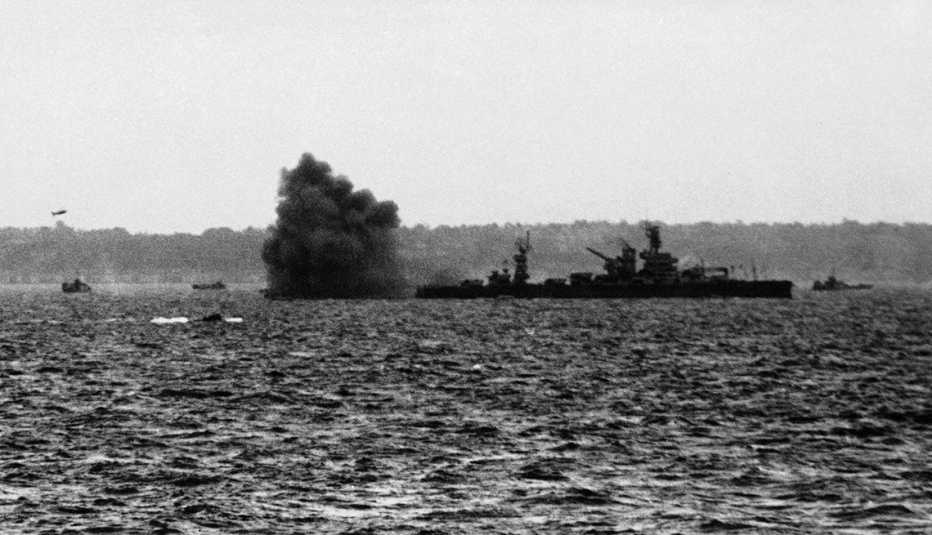AARP Hearing Center


On June 6, 1944, Anthony Sirco was a gunner’s mate on board the USS Arkansas — the oldest ship in the U.S. Navy and known as “Arky” — which shelled Omaha Beach as G.I.s landed for the D-Day invasion.
The son of a Polish mother and a Ukrainian who had both immigrated to America, he enlisted in the U.S. Navy at age 17 in 1943.
Sirco left behind a World War II diary that is a remarkable sailor's eye record of the start of the Allied push to dislodge the Germans from France.
It was the largest naval, air and land military operation in the history of the world involving some 5,000 ships, 160,000 men and thousands of aircraft. Around 2,500 Americans died in the landings at Omaha and two other beaches on D-Day.


You can subscribe here to AARP Experience Counts, a free e-newsletter published twice a month. If you have feedback or a story idea then please contact us here.
Sirco, with enemy shells falling around and hostile planes intent on destroying his ship, scribbled in a journal, sometimes as frequently as every five minutes. He was a witness to perhaps the greatest battle in history.
0530: “The Arkansas was anchored in her firing position. The light of dawn brought the shores of France surprisingly close, still a little hard to see as the bombers had just left and dust had not settled yet.”
0600: “Arky opened up with five- and three-inch battery. Enemy sent up challenge flares to see if we were actually the enemy. They soon found out as our 12 inchers began to speak. Shore battery became a menace...close hit near the Arky.”
0747: “We picked up survivors from a bomber…Our fire control party perished when their landing craft caught fire.”
0800: “Out of the first 150 men ashore only eight lived. There were many land mines, booby traps and machine gun resistance.”
0930 “We were firing at a Nazi gun emplacement in the mouth of a cave, one of our shells burrowed its way through side then exploded burying both the gun and crew alive.”
Mid-morning: “The troops gained a foothold and pushed inland, but many times it looked as if they would be pushed back into the sea. During the landing hundreds of landing craft were destroyed because the Germans turned their still-intact weapons onto the craft.”
1300: “We have fired 64 shells and used 256 bags of gunpowder. The amount of gun powder loaded behind the shells determined the distance the projectiles were hurled.
































































More From AARP Experience Counts
This Guinness World Record Helps Military Families
An epic leap that took training and nerves of steelBeware of This Callous Service Dog Scam
How to spot fraudsters who target veteransMY HERO: What My Father Left Unsaid About World War II
Howard Mansfield's father never talked about his war experience. But why?Recommended for You